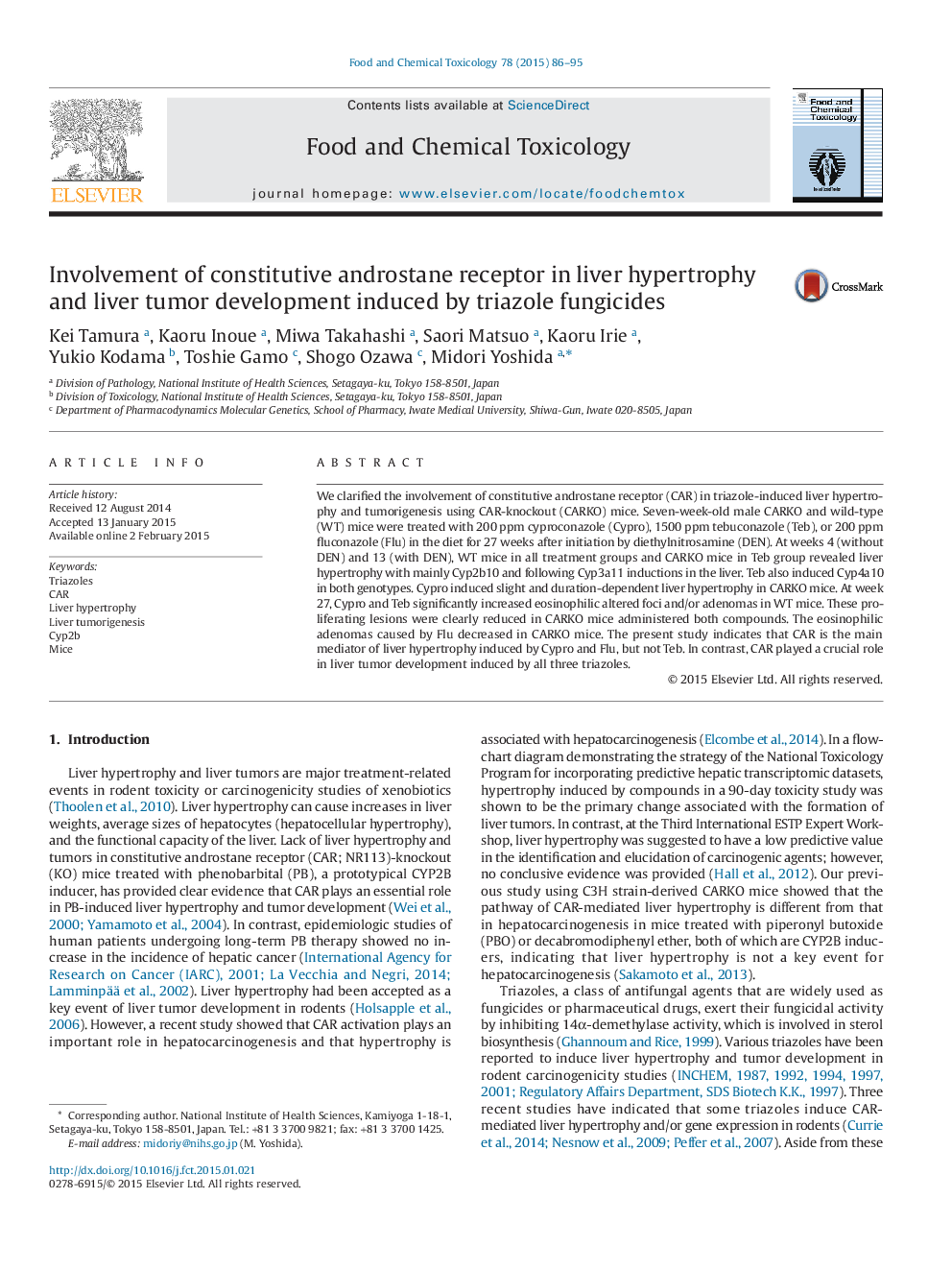| Article ID | Journal | Published Year | Pages | File Type |
|---|---|---|---|---|
| 5849914 | Food and Chemical Toxicology | 2015 | 10 Pages |
Abstract
We clarified the involvement of constitutive androstane receptor (CAR) in triazole-induced liver hypertrophy and tumorigenesis using CAR-knockout (CARKO) mice. Seven-week-old male CARKO and wild-type (WT) mice were treated with 200âppm cyproconazole (Cypro), 1500âppm tebuconazole (Teb), or 200âppm fluconazole (Flu) in the diet for 27 weeks after initiation by diethylnitrosamine (DEN). At weeks 4 (without DEN) and 13 (with DEN), WT mice in all treatment groups and CARKO mice in Teb group revealed liver hypertrophy with mainly Cyp2b10 and following Cyp3a11 inductions in the liver. Teb also induced Cyp4a10 in both genotypes. Cypro induced slight and duration-dependent liver hypertrophy in CARKO mice. At week 27, Cypro and Teb significantly increased eosinophilic altered foci and/or adenomas in WT mice. These proliferating lesions were clearly reduced in CARKO mice administered both compounds. The eosinophilic adenomas caused by Flu decreased in CARKO mice. The present study indicates that CAR is the main mediator of liver hypertrophy induced by Cypro and Flu, but not Teb. In contrast, CAR played a crucial role in liver tumor development induced by all three triazoles.
Related Topics
Life Sciences
Agricultural and Biological Sciences
Food Science
Authors
Kei Tamura, Kaoru Inoue, Miwa Takahashi, Saori Matsuo, Kaoru Irie, Yukio Kodama, Toshie Gamo, Shogo Ozawa, Midori Yoshida,
